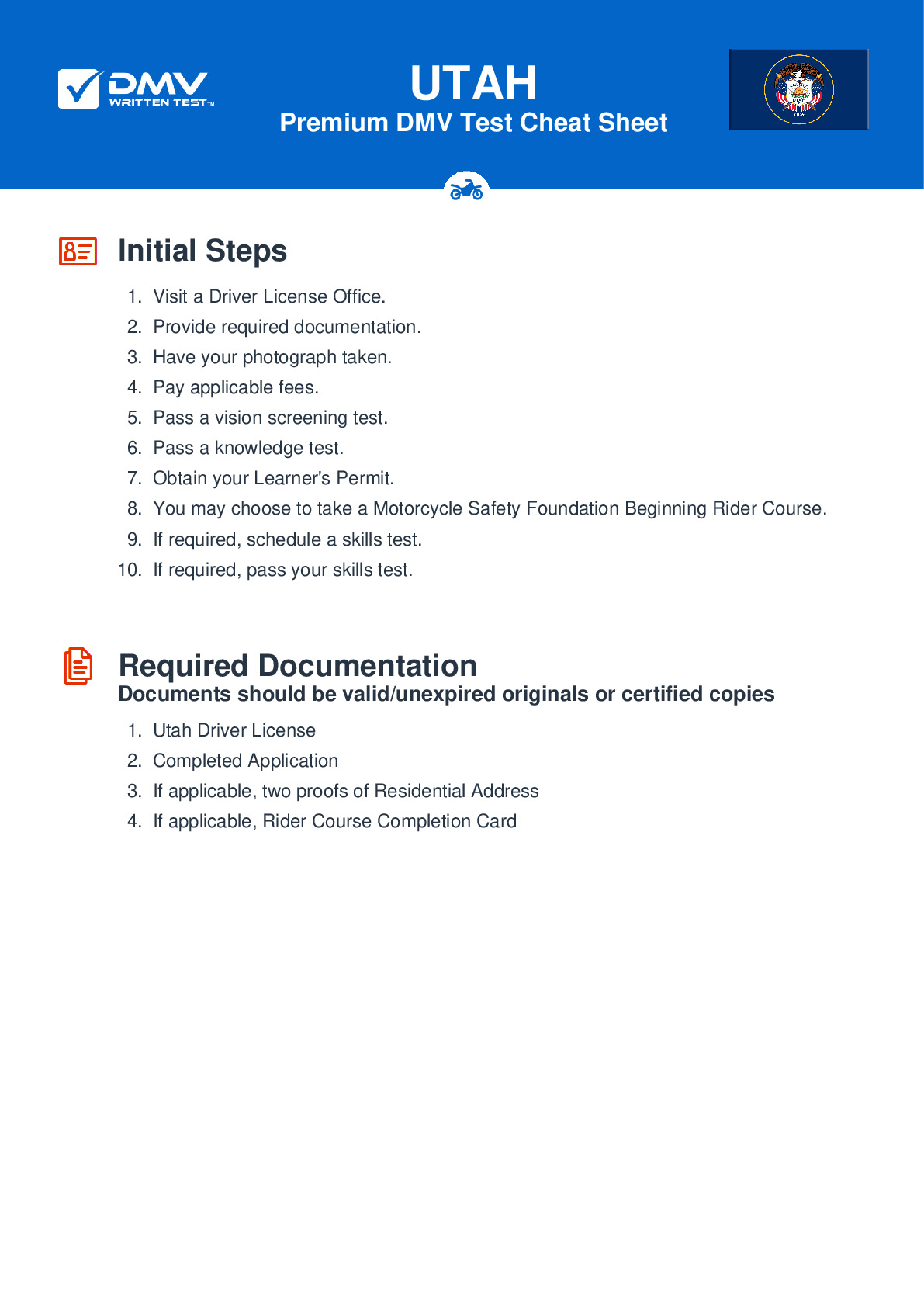2025 Utah Motorcycle Permit Test 10
The following questions are from real DMV written motorcycle permit tests. These are some of the actual permit questions you will face in Utah when getting your motorcycle learners permit. Each motorcycle theory practice test question has three answer choices. Select one answer for each question and select "grade this section." You can find this button at the bottom of the drivers license quiz. For a complete list of questions and answers for Utah please visit https://cheat-sheets.dmv-written-test.com/en/utah/motorcycle.
Number of Tests
Number of Question
Passing Score
1. A major effect of alcohol consumption is:
Explanation
Alcohol is a depressant. It slows down and impairs bodily functions, both physical and mental.
2. Maintain an adequate following distance behind other vehicles:
Explanation
Maintaining an adequate following distance ensures that you will have enough space to stop or swerve out of the way if the vehicle ahead of you stops suddenly. A space cushion also provides you with a better view of any hazards on the road surface, such as potholes.
3. When both braking and swerving must be done to avoid an unexpected hazard, a rider should:
Explanation
Because you need adequate traction to swerve safely, you should not brake and swerve at the same time. Instead, if you approach a hazard that requires you to brake and swerve, you should perform one action and then the other.
4. If you must brake and swerve to avoid a hazard, you should:
Explanation
If a hazard requires you to brake and swerve to avoid a collision, you should take the actions separately. Do not brake while swerving because doing so may cause your motorcycle to fall over.
5. When riding with a passenger, you should tell them to do all of the following, except:
Explanation
To help keep the operator focused on riding, passengers should avoid unnecessary conversation or movement. Passengers should get on a motorcycle only after the engine has been started. They should sit as far forward as they can without crowding the operator and hold firmly onto the operator's waist, hips, or belt.
6. In a slow, tight turn, the rider should:
Explanation




